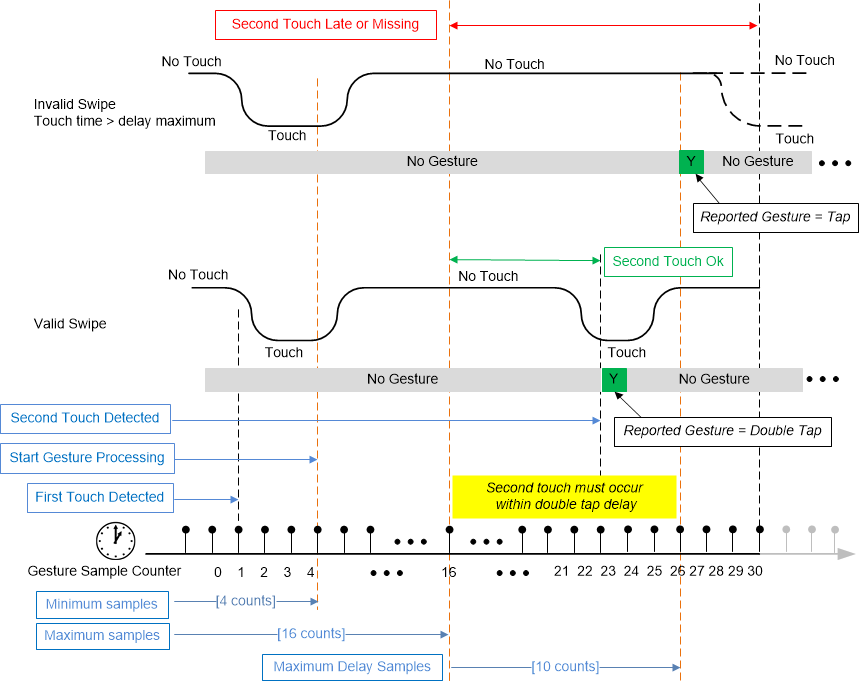TIDUEM5 December 2018
- Description
- Resources
- Features
- Applications
- Design Images
- 1System Description
- 2System Overview
- 3Hardware, Software, Testing Requirements, and Test Results
- 4Demonstration
- 5Design Files
- 6Software Files
- 7Related Documentation
- 8Terminology
- 9About the Author
3.4.3 Double-Tap Gesture
A double-tap gesture is defined as a momentary finger touch followed by a release, then a second touch and release. Figure 8 shows that the double-tap gesture is essentially a tap followed by a delay that defines a window when the second touch can occur. The software parameters are TouchSampleCount_Min, TouchSampleCount_Max and DoubleTapDelayCount_Max.
NOTE
A sensor that supports double-tap also supports tap by default. The reader must be aware that if a tap and not a double-tap is detected, the tap gesture is not reported until after the double-tap delay period expires. This can create a slight delay in tap response, but when properly tuned, the delay has a minimal impact on user interaction.
 Figure 8. Double Tap Gesture Detection
Figure 8. Double Tap Gesture Detection